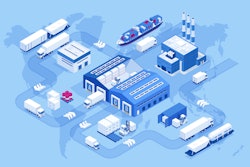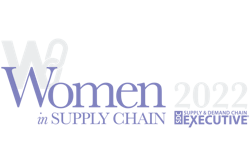
A Journal of Supply Chain Management article analyzes the problem of oversupply in the supply chain for prescription opioids. Oversupply is a supply chain problem that occurs when ordinary production and distribution processes deliver hazardous products in volumes that exceed the safety needs of a market. Many producers contribute to this problem, but none is uniquely responsible and the problem is explained as industry practice.
While most executives recognize bribery, fraud or counterfeiting as organizational misconduct, oversupply is too. However, it is more difficult to recognize, as it happens in tiny, ordinary pieces throughout the supply network. The systemwide, taken-for-granted nature of oversupply behavior is why it’s called normal misconduct.
Executives can look for three red flags to identify oversupply and other forms of normal misconduct in their supply chain.
1. Operating close to grey areas. Oversupply usually occurs when organizations operate “close to the line” in grey areas created by disparities within and between regulatory environments, cultures or power relations. Supply chain grey areas often develop when firms operate across cultures or try to reconcile competing incentives based on incompatible sets of norms.
2. Responding to demand mindlessly. Normal misconduct like oversupply does not require a positive inclination to do wrong. It often occurs when individuals and organizations respond to their environment relatively mindless. This sometimes gives rise to wrongdoing in a way that is incidental to the production of right doing. Executives are trained to meet consumers’ needs, especially when it is profitable. They do not usually have to worry about whether doing so is bad for the consumer, society or the environment. Even if a product is potentially hazardous, shouldn’t consumers be responsible for their own consumption choices? When these kinds of rationalizations exist, the risks of apparently ordinary behavior may seem minor.
3. Personal moral compass. Executives need to recognize that their own judgement of right and wrong is not the one that matters and that judgements about misconduct are often delayed. The judgements that matter come from regulators, judges, critics or market analysts who eventually decide what executives thought were legal, socially responsible behaviors are actually misconduct.
Judgements about the wrongness of behavior are often delayed because consequences emerge slowly. Also, responsibility for a collective outcome like oversupply is hard to pin down because market-driven justifications are used to override ethical and societal concerns. While judgements might be slow, they can be severe.
What does this mean for supply chain executives? Participation in oversupply or any form of normal misconduct is a strategic choice about business risk. Executives who identify the three red flags can behave responsibly for their communities and companies by prioritizing ethical behavior and community health over market-driven justifications. Doing so requires executives to break out of their day-to-day supply routines and reflect carefully on the nature of the grey areas they operate in. Hidden in those grey areas is usually a choice between market justifications and the principle of care for communities and consumers. While executives should not need the threat of legal consequences to make ethical decisions, the realization that even if consequences are delayed, they will come, should be a factor in the calculation of business risk.



![Pros To Know 2026 [color]](https://img.sdcexec.com/mindful/acbm/workspaces/default/uploads/2025/08/prostoknow-2026-color.mduFvhpgMk.png?auto=format%2Ccompress&bg=fff&fill-color=fff&fit=fill&h=100&q=70&w=100)







![Pros To Know 2026 [color]](https://img.sdcexec.com/mindful/acbm/workspaces/default/uploads/2025/08/prostoknow-2026-color.mduFvhpgMk.png?ar=16%3A9&auto=format%2Ccompress&bg=fff&fill-color=fff&fit=fill&h=135&q=70&w=240)






